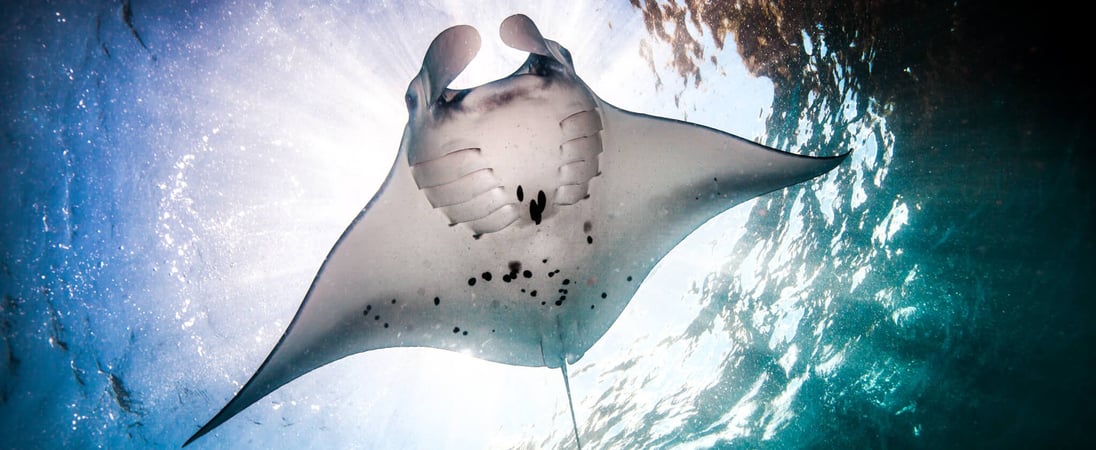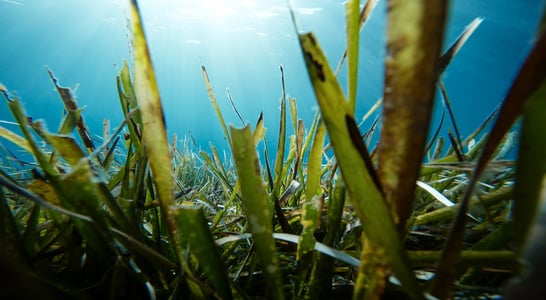
World Manta Day
World Manta Day, celebrated annually on September 17th, is a special occasion dedicated to raising awareness about the conservation status of manta and devil rays.
These beautiful, mysterious ocean giants captivate us with their grace and size, but they face significant threats that require our attention and action.
How to Celebrate World Manta Day
Celebrating World Manta Day can take many forms, from participating in local events to sharing your love for manta rays on social media using the hashtag #WorldMantaDay.
Here are some tips, tricks, and suggestions to make the most of this special day:
- Learn and Share: Visit websites like World Manta Day and MarAlliance to learn more about manta rays. Share your favorite manta photos and videos on social media, and spread the word about these incredible animals.
- Support Conservation Efforts: Reduce your seafood consumption and only eat sustainably sourced species. Support manta ray charities and research groups that work tirelessly to protect these creatures and their habitats.
- Be a Responsible Tourist: If you’re lucky enough to see manta rays in person, follow local codes of conduct when swimming or diving with them. Remember, mantas are completely harmless and are popular with divers and snorkelers.
- Submit Manta ID Photos: If you have manta ID photos, submit them to research groups. These photos help researchers identify individual mantas and understand more about their behavior.
- Adopt a Manta: Several organizations offer the opportunity to “adopt” a manta ray. This symbolic adoption helps fund research and conservation efforts.
- Educate Others: Use this day to educate others about the importance of mantaray conservation. Share facts about their behavior, threats they face, and what can be done to help protect them.
History of World Manta Day
World Manta Day, celebrated annually on September 17th, is a special occasion dedicated to raising awareness about the conservation status of manta and devil rays.
These beautiful, mysterious ocean giants captivate us with their grace and size, but they face significant threats that require our attention and action.
The inception of World Manta Day is rooted in the need to educate and raise awareness about these majestic creatures. The theme for the 2022 celebration was aptly titled “Education”.
The goal was to empower everyone, from scientists to tourists, school students to policymakers, with knowledge about manta rays, their relatives, and their precious habitats. The belief is that knowledge is power, and only by raising awareness can we hope to protect these special creatures for years to come.
Manta rays are close relatives of all sharks and rays, meaning they have a skeleton made of cartilage rather than bone.
Despite their colossal size, with some individuals reaching seven meters from wingtip to wingtip and weighing up to two tonnes, mantas feed on microscopic animals called zooplankton.
Every manta ray has a unique spot pattern on its belly that can be used to identify it, just as we are identified by our fingerprints. As far as fish go, mantas have one of the largest brains, supporting their curiosity and complex social interactions.
The Fascinating Life of Manta Rays
Manta rays are known for their intelligence and social behavior. They have the largest brain-to-body ratio of all fish species studied to date.
In some regions, these highly intelligent and social creatures spend their days in large groups and at cleaning stations in shallow waters and then move into deeper waters at night to feed.
Giant manta rays are among the least productive species of rays in terms of their reproductive output, as it is estimated that a single female may only produce 4-7 offspring in its lifetime.
The valuable trade of their gill plates has led to increased demand for giant manta rays, and some fisheries have begun targeting them.
Because of their low reproductive rate, the species would take a long time to recover from overexploitation. The IUCN lists the giant manta ray as endangered and the reef manta ray as vulnerable.
The Importance of Manta Ray Conservation
Manta rays play an essential role in the health of our oceans. They are filter feeders, meaning they consume large quantities of zooplankton.
This feeding behavior helps to maintain the balance of marine ecosystems. However, manta rays face numerous threats, including targeted fishing, bycatch in fisheries targeting other species, habitat degradation, and climate change.
The conservation of manta rays is crucial not only for the health of marine ecosystems but also for the economies of many coastal communities that rely on manta ray tourism. In places like the Maldives, manta ray tourism brings significant income to local communities.
However, this tourism must be managed sustainably to ensure it does not harm the manta ray populations it relies on.
World Manta Day is a celebration of these magnificent creatures and a call to action to protect them. By participating in this day, we can all contribute to the conservation of manta rays and ensure they continue to grace our oceans for years to come.
Let’s use this day to celebrate these incredible creatures, learn more about them, and take action to protect them. Together, we can make a difference for manta rays and the oceans they call home.
World Manta Day FAQs
Did pirates have any superstitions about manta rays?
Some sailors believed manta rays could drag ships underwater by wrapping their massive fins around anchors.
This was pure fiction, as manta rays are gentle and harmless filter feeders. Pirates in the Caribbean sometimes mistook them for sea monsters, calling them “devil fish” because of their horn-like cephalic fins.
Do manta rays have a connection to famous legends or folklore?
In Mexican folklore, manta rays are linked to water spirits that guide lost fishermen back to shore.
Some Polynesian myths also portray them as sacred animals that protect ocean travelers. In Indonesia, certain tribes believe seeing a manta ray before a journey brings good luck and safe passage.
Why do some manta rays appear to be pink?
The world’s only known pink manta ray was spotted near Australia’s Great Barrier Reef. Scientists believe this rare pink color results from a genetic mutation affecting pigment production.
Unlike albino animals, this manta still has normal eyesight and can survive just as well as its black-and-white counterparts.
How do manta rays ‘fly’ underwater?
Unlike most fish, manta rays don’t move their tails to swim. Instead, they flap their pectoral fins like wings, giving them an elegant, bird-like motion.
Some can glide over 30 feet in a single pulse, making them one of the most energy-efficient swimmers in the ocean.
What’s the largest manta ray ever recorded?
The biggest recorded manta ray had a wingspan of nearly 30 feet and weighed over 5,000 pounds.
It was spotted off the coast of Peru in the early 1900s. However, giant manta rays are rarely measured accurately because they often live in deep waters.
Do manta rays communicate with each other?
Manta rays don’t make sounds, but they use body language to interact.
They perform flips, barrel rolls, and fin touches to signal emotions like curiosity or dominance. Some studies suggest they may even recognize each other by their unique belly spot patterns.
Can manta rays survive outside of water?
Unlike some fish, manta rays cannot survive for long out of water because they lack gills that can store oxygen.
This is why they rarely get stranded like dolphins or whales. If lifted onto a boat, they can only survive for a few minutes before suffocating.
Why do manta rays jump out of the water?
Manta rays are known for their incredible leaps, sometimes reaching 10 feet above the surface.
Scientists believe they jump to remove parasites, attract mates, or simply play. Some groups have been seen leaping together, creating a dramatic “splash dance” effect.
Are manta rays related to sharks?
Yes! Despite their gentle nature, manta rays belong to the same elasmobranch family as sharks.
Both have cartilaginous skeletons instead of bones, which makes them more flexible. However, unlike most sharks, manta rays have no teeth and only eat plankton.
What’s the weirdest way people celebrate manta rays?
In some parts of Japan, manta rays are honored with traditional dances, mimicking their graceful swimming.
In Mozambique, local artists carve wooden manta ray sculptures as souvenirs.
Some conservation groups even organize “Manta Ray Yoga” sessions, where people stretch and move like the rays to raise awareness.
See what else is happening…
There’s always more going on every month at Days Of The Year. Here are our favorites this month!
Also on ...
View all holidaysInternational Country Music Day
Kick up your heels and get ready to sing along to the sounds of the heartland. Catchy lyrics and twangy guitars await!
National Apple Dumpling Day
Getting tired of apple pie? Try apple dumplings instead, a delicious apple-filled treat containing cinnamon, nutmeg, and perhaps cloves or lemon zest.








